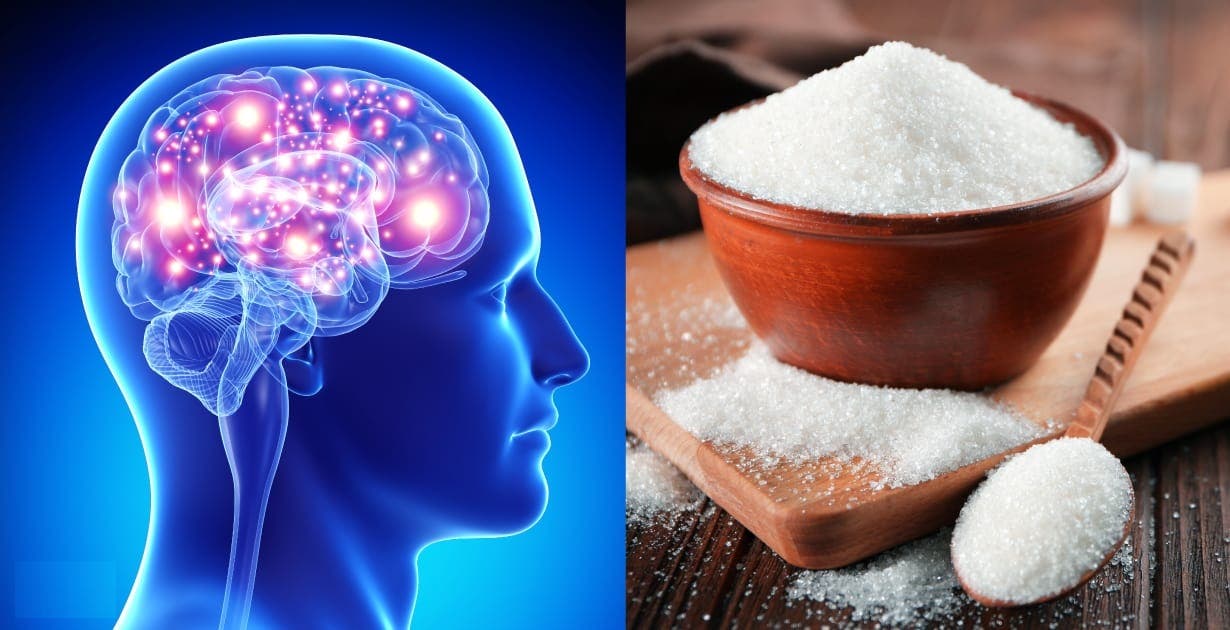The human brain has a sweet tooth, breakthrough study finds
The brain is known to have a high demand for glucose, which is used to power the chemical reactions that keep us alive.

[Apr. 25, 2023: JJ Shavit, The Brighter Side of News]
The brain is known to have a high demand for glucose, which is used to power the chemical reactions that keep us alive. (CREDIT: Creative Commons)
The brain is known to have a high demand for glucose, which is used to power the chemical reactions that keep us alive. It is estimated that the brain consumes nearly one quarter of the body’s sugar energy, or glucose, each day. New research by scientists at Gladstone Institutes and UC San Francisco (UCSF) has shed new light on the mechanisms behind how neurons in the brain consume and metabolize glucose, and how they adapt to glucose shortages.
Previous studies have established that the brain’s uptake of glucose is decreased in the early stages of neurodegenerative diseases like Alzheimer’s and Parkinson’s. The new findings could lead to the discovery of new therapeutic approaches for those diseases and contribute to a better understanding of how to keep the brain healthy as it ages.
The research was conducted by Ken Nakamura, MD, PhD, associate investigator at Gladstone and senior author of the new study published in the journal Cell Reports. Nakamura and his team used induced pluripotent stem cells (iPS cells) to generate pure human neurons. IPS cell technology allows scientists to transform adult cells collected from blood or skin samples into any cell type in the body.
The researchers mixed the neurons with a labeled form of glucose that they could track, even as it was broken down. This experiment revealed that neurons themselves were capable of taking up the glucose and of processing it into smaller metabolites.
Related Stories
To determine exactly how neurons were using the products of metabolized glucose, the team removed two key proteins from the cells using CRISPR gene editing. One of the proteins enables neurons to import glucose, and the other is required for glycolysis, the main pathway by which cells typically metabolize glucose. Removing either of these proteins stopped the breakdown of glucose in the isolated human neurons.
“This is the most direct and clearest evidence yet that neurons are metabolizing glucose through glycolysis and that they need this fuel to maintain normal energy levels,” says Nakamura, who is also an associate professor in the Department of neurology at UCSF.
Nakamura’s group next turned to mice to study the importance of neuronal glucose metabolism in living animals. They engineered the animals’ neurons to lack the proteins required for glucose import and glycolysis. As a result, the mice developed severe learning and memory problems as they aged.
Scientists from Gladstone and UCSF have shed light on exactly how neurons consume and metabolize glucose, which could have implications for understanding neurodegenerative diseases. Seen here are Ken Nakamura (left), Yoshi Sei (center), and Myriam Chaumeil (right). (CREDIT: Gladstone Institutes)
“This suggests that neurons are not only capable of metabolizing glucose, but also rely on glycolysis for normal functioning,” Nakamura explains.
“Interestingly, some of the deficits we saw in mice with impaired glycolysis varied between males and females,” he adds. “More research is needed to understand exactly why that is.”
Myriam M. Chaumeil, PhD, associate professor at UCSF and co-corresponding author of the new work, has been developing specialized neuroimaging approaches, based on a new technology called hyperpolarized carbon-13, that reveal the levels of certain molecular products. Her group’s imaging showed how the metabolism of the mice’s brains changed when glycolysis was blocked in neurons.
Nakamura (left) and Chaumeil (right) collaborated to better understand what happens to glucose in the brain and showed that neurons directly metabolize sugar. (CREDIT: Gladstone Institutes)
“Such neuroimaging methods provide unprecedented information on brain metabolism,” says Chaumeil. “The promise of metabolic imaging to inform fundamental biology and improve clinical care is immense; a lot remains to be explored.”
These findings could lead to significant advances in the understanding of how brain metabolism changes in individuals with neurodegenerative diseases like Alzheimer's and Parkinson's. The researchers believe that their work could pave the way for new treatments that target the metabolic pathways involved in these diseases.
"Ultimately, we want to understand the basic biology of how the brain works, but we also want to use this knowledge to develop new therapies," Nakamura says. "We're excited about the potential for these findings to have a real impact on the lives of people with neurodegenerative diseases."
Chaumeil (center), seen here with Sei (left) and Nakamura (right), developed a specialized imaging approach that helped provide unprecedented information about brain metabolism in living animals. (CREDIT: Gladstone Institutes)
The study is just the latest in a growing body of research into the role of metabolism in brain function and disease. Scientists are increasingly recognizing that the brain is an energy-intensive organ that requires a steady supply of glucose to function properly.
One of the challenges of studying brain metabolism is that it is difficult to measure in living animals and humans. However, recent advances in imaging technology have made it possible to study brain metabolism in real time, opening up new avenues of research.
In addition to the potential for new treatments for neurodegenerative diseases, the researchers believe that their work could also have implications for other areas of neuroscience, including the study of learning and memory.
Yoshi Sei (center) is the first author of a new study—led by UCSF’s Chaumeil (left) and Gladstone’s Nakamura (right)—that provides the clearest evidence to date that neurons need glucose to maintain normal energy levels. (CREDIT: Gladstone Institutes)
"Understanding how the brain metabolizes energy is fundamental to understanding how it works," Chaumeil says. "We're only scratching the surface of what's possible with these new imaging techniques, and we're excited to see where this research will take us in the years ahead."
Overall, the study represents an important step forward in the understanding of brain metabolism and its role in health and disease. With further research, it could pave the way for new treatments and therapies that target the metabolic pathways involved in neurodegenerative diseases and other brain disorders.
As the human brain's sweet tooth continues to demand a constant supply of glucose, scientists will undoubtedly continue to explore the intricacies of how the brain metabolizes this essential nutrient. With each new discovery, we come closer to unlocking the secrets of the brain and finding new ways to keep it healthy and functioning at its best.
Note: Materials provided above by The Brighter Side of News. Content may be edited for style and length.
Like these kind of feel good stories? Get the Brighter Side of News' newsletter.



